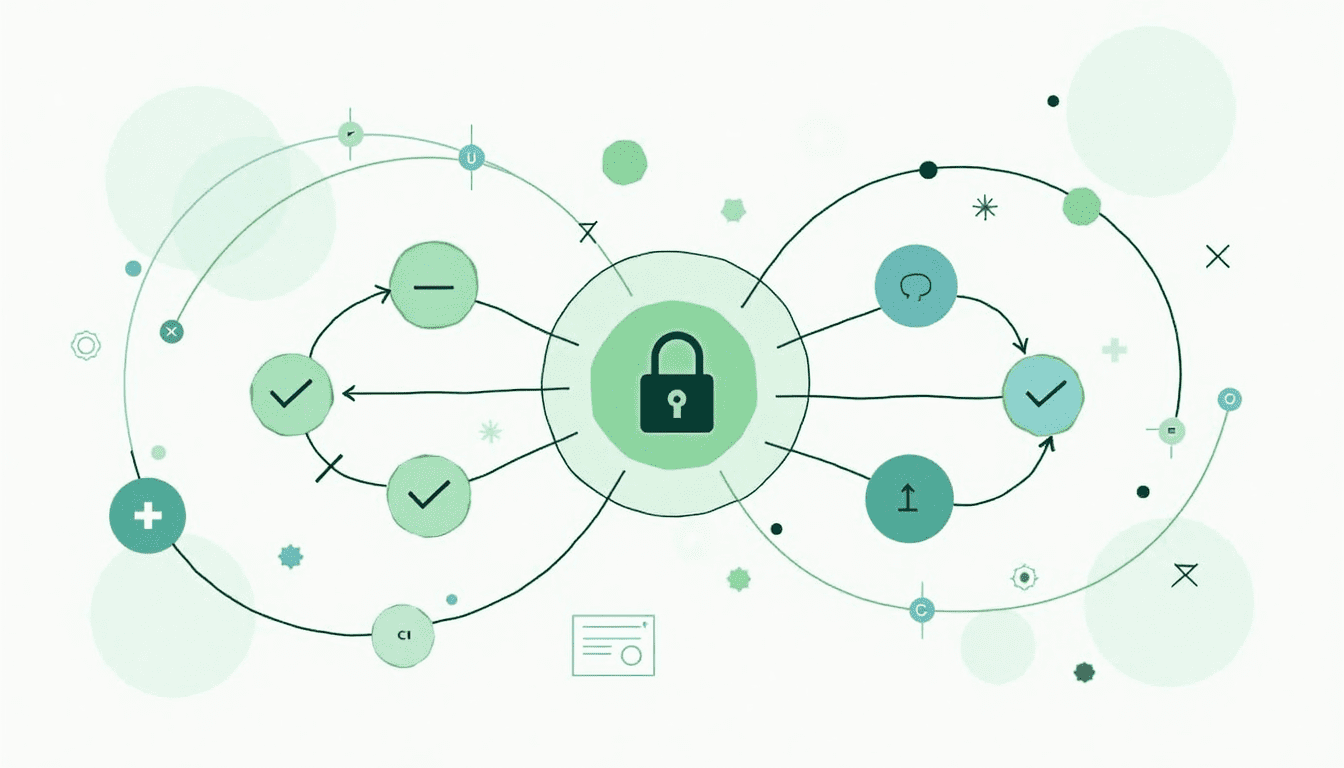Updated November 17, 2024
Understanding Verification, Validation, and Cybersecurity Testing
Defining Verification in Cybersecurity
Verification in cybersecurity refers to the process of ensuring that a system meets specified requirements. It is akin to checking the recipe against the dish; you want to ensure that all ingredients are in place before setting it to bake. Verification answers the question: “Did we build the product right?”
This process is meticulous. It involves evaluating the documents, design, code, and other components associated with the system. Verification is not just a box-ticking exercise; it’s about quality assurance. Imagine building a fortress where every stone and mortar is inspected; it’s that level of diligence.
Verification can be broken down into various techniques, such as reviews, inspections, and formal verification methods. Each technique plays a crucial role in identifying discrepancies early in the development cycle, thereby reducing the cost and effort required to fix issues later on. For instance, code reviews not only help catch errors but also foster knowledge sharing among team members, enhancing the overall skill set of the development team. By integrating verification into the development process, organizations can build a solid foundation for their cybersecurity posture.
The Role of Validation in Cybersecurity
Validation, on the other hand, takes a different approach. It’s about ensuring that the right product has been built. Validation asks the crucial question: “Did we build the right product?” Picture a chef tasting the dish before serving it—validation ensures that the end product meets user needs and expectations.
In cybersecurity, validation confirms that the security measures implemented are effective against the requirements they were designed to meet. This could involve penetration testing or simulations to ensure that vulnerabilities are patched. It’s like the difference between having a solid gate (verification) and verifying that it actually keeps intruders out (validation).
Validation is often an iterative process, requiring ongoing assessment as new threats emerge and user requirements evolve. This dynamic nature of validation means that organizations must continuously engage with their stakeholders to gather feedback and adjust their security measures accordingly. For example, user acceptance testing (UAT) can provide invaluable insights into how real users interact with the system, ensuring that security features do not hinder usability while still providing robust protection. This balance is essential in creating a product that functions securely and meets its users’ practical needs.
The Importance of Cybersecurity Testing
Cybersecurity testing serves as the battlefront against threats. It is the litmus test for security systems, allowing organizations to discover weaknesses and vulnerabilities before malicious actors can exploit them. In the ever-evolving cybersecurity landscape, testing is not just beneficial but essential.
Without rigorous cybersecurity testing, organizations risk catastrophic breaches. It’s a bit like walking a tightrope; one misstep can lead to disaster. Testing can involve several methods, including static code analysis, dynamic testing, and threat modeling. Essentially, it is a multi-layered approach to identify potential weaknesses.
Additionally, the landscape of cybersecurity threats constantly changes, with new vulnerabilities emerging regularly. As such, organizations must adopt a proactive stance, regularly updating their testing methodologies to stay ahead of potential attacks. Incorporating automated testing tools can significantly enhance the efficiency and effectiveness of the testing process, allowing for continuous monitoring and rapid identification of vulnerabilities. Furthermore, fostering a culture of security awareness among employees can complement technical testing efforts, as human factors often play a critical role in the success or failure of security measures. Companies can create a more resilient cybersecurity environment by combining technical testing with organizational awareness.
The Interplay Between Verification and Validation
How Verification and Validation Complement Each Other
Verification and validation are like dance partners, moving in sync to enhance security outcomes. Each plays a distinct role, yet they share a common goal: to ensure robust cybersecurity. When done right, these processes create a symphony of security assurance.
Consider validation as confirming that what you’ve built genuinely satisfies your users, while verification ensures that the building process did not deviate. Without verification, validation could lead to incorrect conclusions about a system’s effectiveness. Conversely, validating without verification could mean constructing a fundamentally flawed security solution.
In software development, for instance, the interplay between these two processes can significantly impact the final product. Imagine a scenario where a new application is developed for banking transactions. Verification would involve checking the code for errors, ensuring that all features function as intended and that security protocols are correctly implemented. Conversely, validation would involve real users testing the application to ensure it meets their needs and expectations, such as ease of use and accessibility. This dual approach enhances user satisfaction and builds trust in the security measures put in place.
Differences Between Verification and Validation
While verification and validation may seem similar, the nuances set them apart. Verification focuses on building the product correctly, while validation emphasizes building the correct product. Their intertwined nature can sometimes blur the lines between the two, but differentiating them is vital for any cybersecurity strategy.
To illustrate, think of verification as a stringent academic exam. You must study the right materials and understand the concepts well. Validation is akin to receiving feedback from your peers to ensure the knowledge you’ve absorbed meets the curriculum’s standards. Both are critical, but they tackle different aspects of the educational journey.
The differences extend into the methodologies employed in each process. Verification often employs static techniques, such as inspections and reviews, to catch issues early in the development cycle. In contrast, validation typically utilizes dynamic techniques, such as user acceptance testing and beta testing, to gather real-world feedback. This distinction is crucial because it highlights the importance of addressing potential problems at various product lifecycle stages, ultimately leading to a more secure and user-friendly outcome. By effectively understanding and implementing verification and validation, organizations can foster a culture of continuous improvement and resilience against emerging cybersecurity threats.
The Role of Cybersecurity Testing in Verification and Validation
The Intersection of Cybersecurity Testing and Verification
Cybersecurity testing sits at the crossroads between verification and validation. It provides the empirical evidence needed to support both processes. When organizations conduct testing, they can objectively assess whether the software is implemented correctly per the specifications laid out.
In this scenario, testing functions as the bridge, directly linking the theoretical constructs of verification with practical user needs to be validated through real-world scenarios. It’s where abstract principles meet tangible realities, ensuring successful cybersecurity endeavors.
How Cybersecurity Testing Validates Security Measures
Cybersecurity testing not only verifies but also plays a crucial role in validation. By putting security measures through their paces, organizations can determine if they perform as intended. It’s like a rigorous workout for your security protocols, shaping them to withstand real adversarial conditions.
Fuzz testing, for instance, involves bombarding software with unexpected inputs to find bugs and vulnerabilities. This technique reveals critical flaws that need addressing, ultimately validating the effectiveness of the entire security framework. Without such scrutiny, organizations can remain blissfully unaware of lurking dangers.
The Impact of Effective Verification, Validation, and Testing on Cybersecurity
Enhancing Security Through Thorough Verification and Validation
As the saying goes, “An ounce of prevention is worth a pound of cure.” This rings particularly true when it comes to cybersecurity. Effective verification and validation bolster an organization’s defenses. A robust cybersecurity framework establishes rigorous protocols to detect vulnerabilities early and often.

Organizations that emphasize these processes often experience fewer security incidents. They are better prepared to counteract potential breaches, making their systems far more resilient. It’s like putting on a well-fitted suit of armor before heading into battle; attention to detail can make a world of difference.
The Consequences of Inadequate Cybersecurity Testing
Conversely, countless organizations have felt the bitter sting of inadequate cybersecurity testing. Lapses in verification can lead to devastating breaches, costing firms millions and threatening reputations. The aftermath of a failed security framework can feel akin to a shipwreck—chaotic and often impossible to salvage.
Notably, high-profile incidents serve as cautionary tales, reminding us of the high stakes involved. For instance, one overlooked vulnerability can act as a trojan horse, sneaking in and wreaking havoc. In summary, the price of ignoring proper verification and validation is steep, making it imperative to prioritize these processes.
Future Trends in Verification, Validation, and Cybersecurity Testing
Emerging Techniques in Verification and Validation
The landscape of cybersecurity testing continues to evolve, reflecting emerging threats and technologies. Techniques such as automated verification and validation processes are coming to the forefront. These approaches save time and reduce human error, improving overall cybersecurity effectiveness.

Artificial intelligence is increasingly integrated into verification tools, making the processes more efficient and proactive. By utilizing machine learning algorithms, organizations can continuously adapt to new threats. This capability forms a dynamic shield against evolving cyber threats, ensuring a more secure digital future.
Innovations in Cybersecurity Testing
Look toward innovations in cybersecurity testing to drive future enhancements. These can include advanced penetration testing, threat intelligence tools, and integrated security testing solutions. Staying ahead of the game is not just about reacting to threats; it’s about anticipating and mitigating them before they arise.
As threats become more sophisticated, so must our approaches to testing. Testing strategies that were effective yesterday may not cut it tomorrow. Organizations must remain agile, adapting to new information and technologies. In the world of cybersecurity, complacency can lead to disaster.
Conclusion
The relationship between verification, validation, and cybersecurity testing is not just important; it is the backbone of effective cybersecurity. Each aspect plays a significant role, creating a formidable defense against cyber threats. Organizations must prioritize these processes to ensure a robust cybersecurity posture, safeguarding their data and reputation for the long haul.
As you navigate the complexities of verification, validation, and cybersecurity testing, remember that the right partner can make all the difference. Blue Goat Cyber’s specialized focus on medical device cybersecurity stands ready to guide you through FDA compliance and beyond. Our tailored healthcare security services, expert team, and proven regulatory support ensure that your medical devices meet and exceed the standards for patient safety and data protection. Don’t leave your cybersecurity to chance. Contact us today for cybersecurity help and secure the future of your healthcare technology.
